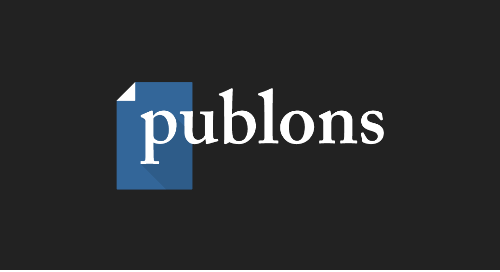transformational-agreements-an-introduction-for-editors-2022-update
May 19, 2022
As an editor, you may be increasingly aware of the move towards open access publishing as policy and funder mandates favor routes towards open access publication. There are several ways publishers, including Wiley, are addressing the increased need for open access publication, such as launching new open access journals or transitioning (flipping) titles to open access from a subscription model.
Another way in which open access publishing is being made available on much larger scales than before is via transformational agreements. With frequent announcements by varying publishers, consortia, and societies, transformational agreements are becoming a common feature of the landscape. Here we give you an overview of what transformational agreements are, their benefits, and how they may affect your journal.
Over 178,000 articles are now covered by transformational agreements ranging in size from 1 up to 16,000 articles per annum.

Number of articles covered by deals between publishers and consortia (source: ESAC registry)

The read element allows authors from eligible institutions full access to all journals published by Wiley, including those published on behalf of our society partners. The publishing elements covers corresponding authors from participating institutions to use funds to publish their article open access in one of over approximately 1,500 Wiley hybrid journals, and in some cases in our 233+ gold open access titles too.
What is a transformational agreement?
A transformational agreement is when a consortium enters into a partnership with a publisher to enable a large-scale transition towards open access. Transformational agreements allow researchers at participating institutions unlimited read access to a publisher’s portfolio of journals, as well as funding to cover Article Publication Charges when choosing to publish open access. See here for a primer and further information on transformational agreements. Wiley is committed to these large-scale transitions combining both access (read) and publishing.
As an editor, why do I need to know about transformational agreements?
The aim of each agreement is to help democratize open access publishing for all researchers at participating institutions covered under each consortium. By removing barriers to open access publication and ensuring that authors will not have to pay the Article Publication Charge themselves, you may start to notice effects on your journal, such as:
- Increased submissions – As Wiley enters transformational agreements with varying consortia, it may result in increased submissions to your journal from those countries. Each agreement presents an opportunity for growth of high-quality research in your journal, should these articles go on to be accepted.
- Increased readership – Each transformational agreement negotiated by Wiley means that researchers at participating institutions can access and read the content within your journal.
- Subject coverage is broadened – The uptake and availability of open access articles has been limited in research areas that traditionally have not had as much access to Article Publication Charge revenues, such as social sciences, humanities, and some physical science subjects. Transformational agreements are a way to create equity towards open access for all fields of research.
- Compliance with funder mandates – with more funders mandating open access publication, transformational agreements open routes to publishing open access. For instance, open access publication in Wiley subscription journals covered under transformational agreements will be one route to compliance as outlined by the principles of Plan S.
Will transformational agreements make a difference to how I run my journal?
We do not expect any editorial policies or standards to change as a result of the transformational agreements that Wiley enters into. As an editor, you should still apply the same rigor of evaluation and peer review to each article submitted to your journals, irrespective of whether the article may be covered under a transformational agreement. The agreement in question will only come into effect for those articles that go on to be accepted in your journal.
How do I maximize engagement in my journal through transformational agreements?
There are varying engagement opportunities for you to consider:
• Commissioning content: to help drive submissions to your journal, content may be commissioned from participating institutions under each agreement. Please speak to your Wiley Journal Publishing Manager on how best to attract content into your journal, through targeted outreach to top authors and/ or leading institutions that publish research in line with your journal’s aims and scopes. It is important to bear in mind that there is no cap to the number of articles published under the Wiley-Projekt DEAL agreement, and commissioning activities can be carried out year-round. However, in the case of our other agreements, there are limits as to how much can be published open access in a calendar year. This means that not all authors that publish under Jisc, for instance, will have their Article Publication Charge covered. Read this blog post for further details on the Jisc agreement.
• Building and utilizing networks: it is worth reviewing your board to ensure there is increased representation from transformational agreement countries. Having a diverse editorial board allows each member to act as a champion for the agreements and encourage authors to submit to your title. Expanding your pool of reviewers also ensures transformational agreement representation and encourages researchers to submit to your journal if they know the Article Publication Charge is likely to be covered.
• Journal transfer networks: transfer networks allow authors to benefit from transformational agreements and get their work published quickly. Are there referral networks in place, or can you look to implement these within a journal network? This can mean either accepting transfers from related journals or referring your rejected articles (as long as they are still of sound scientific methodology) to another journal to consider publishing. Please speak to your Wiley Journal Publishing Manager for support in setting up transfer networks.
With each new agreement, are the same items covered?
Whilst each agreement is unique, and we encourage you to refer to our "Where are Wiley's transformational agreements?" table, there are some common elements in most of the transformational agreements we have agreed so far:
- They are for a set term.
- The agreements combine both read access and open access publishing.
- Most include funding for open access publication in our hybrid journals, and many include funding for publishing in our gold journals.
- Most include a discount on the Article Publication Charge.
- They cover research articles and reviews unless otherwise specified (NB – this may also vary by each participating institution covered under the agreement).
The transformational agreements we have in place at Wiley can be broadly categorized into 2 types of agreement:
- Full and Immediate Transition: combined “publish and read” approach, as shown through the Wiley-Projekt DEAL agreement in Germany. The agreement covers researchers at participating institutions to publish uncapped numbers of articles, whether that is publishing open access in our subscription journals, or through publication in our gold open access journal portfolio. Researchers are also able to access all content (the read element) published by Wiley.
- Stepped Transition: investment migrates from read to publish over the contract term, as is the case for Norway, Sweden, Finland, and the UK. These agreements also still allow for full access to the Wiley portfolio of journals. However, there is either a capped amount of revenue for the migration to open access each annum, or a capped number of articles that can be published open access – if these funds or article caps are exhausted due to increased uptake by authors, then open access article publication will cease for the remainder of that calendar year. The open access funds are then reset at the beginning of each new calendar year of the term, allowing open access publication to resume.
Should my journal fully transition to open access?
As Wiley enters into more transformational agreements, you may see more of your journal content becoming open access (depending on the corresponding author country). This may present an opportunity to consider transitioning (flipping) your journal to a fully gold open access model, especially in light of Article Publication Charges being covered under the various agreements. However, transitioning to fully gold open access is a big decision, and requires detailed analysis to help inform that decision. We want you to be confident a transition to open access can be sustained and advise speaking to your Wiley Journal Publishing Manager to discuss the most appropriate strategy for your journal.
Resources:
For more information on open access, see here.
If authors covered under any of the transformational agreements in place at Wiley have any questions, they can contact AccountDashboardSupport@wiley.com for help.
See here for a full list of participating institutions that are covered in our transformational agreements. The list also includes institutions that have a Wiley Open Access Account, which can help cover some, if not all, of the Article Publication Charge for authors.









